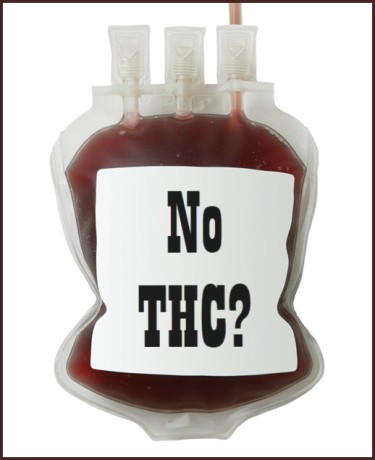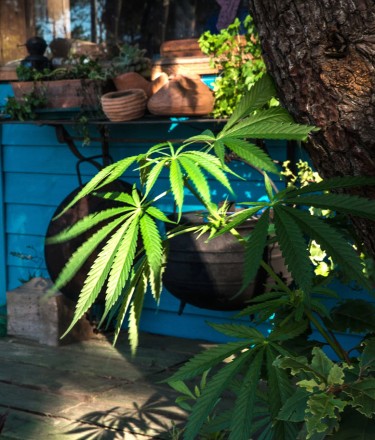Cannabis News
Scientists Got a Bunch of Worms High and All They Wanted to Do Was Eat Junk Food
Published
12 months agoon
By
admin
After consuming cannabis, many individuals experience an uptick in their hunger, commonly known as munchies. This phenomenon is so widely recognized that it often appears in movies and TV shows, depicting people developing an insatiable craving for food after smoking cannabis.
However, the munchies are not a mere myth. Cannabis possesses the ability to stimulate people’s appetite and cravings. Let’s delve deeper into the mechanisms through which it triggers this effect.
Why Does Cannabis Make People Hungry?
Cannabis impacts appetite through two distinct mechanisms. Firstly, it can enhance the flavor of food, making it more appealing and increasing the likelihood of consumption. Secondly, it can deceive the brain into perceiving hunger signals, even when you have recently eaten.
When cannabinoids, the active constituents in cannabis, attach to specific receptors in the body, they produce distinct effects. Upon binding to receptors on your tongue, they augment the brain’s reaction to sweet-tasting food and intensify the craving for fatty foods. Furthermore, a clinical investigation indicated that inhaling cannabis can boost the production of hormones responsible for triggering hunger.
It is important to note that not all cannabis products induce hunger, as the impact on appetite levels depends on the activation of specific receptors. The primary cannabinoid responsible for stimulating appetite is tetrahydrocannabinol (THC), whereas other cannabinoids may not activate the receptors that regulate hunger.
While THC is the primary cannabinoid known to enhance appetite, it is just one of over 100 active chemicals in cannabis. Animal research has revealed that cannabigerol (CBG), another cannabinoid, may also trigger hunger without causing the intoxicating effects of THC. This makes CBG an attractive study area for researchers seeking to stimulate appetite without the associated high produced by THC.
How Long Do the Munchies Last?
The duration of munchies following cannabis consumption can be challenging to determine precisely. The quantity and mode of consumption are significant factors that affect the course of the effects.
For instance:
Inhaling or Smoking Cannabis: This method causes cannabis to achieve its peak concentration in the brain within 3 to 10 minutes and typically subsides within 2 to 3 hours.
Consuming cannabis orally: When cannabis is ingested, it may take up to 2 hours to attain its maximum concentration in the brain. However, its effects may last 6 to 8 hours, sometimes even longer. It is worth noting that individuals may react differently to cannabis, and as a result, the duration and intensity of hunger may differ from the pattern above.
Worms Get The Munchies, Too
Recent research has uncovered that it’s not only humans who experience the munchies; worms also demonstrate a similar fondness for their preferred treats following cannabis consumption.
According to Shawn Lockery, a researcher at the University of Oregon in Eugene, Cannabinoids increase the appetite of nematodes for their preferred foods while simultaneously reducing their hunger for non-preferred foods. As such, the impact of cannabinoids on nematodes aligns with the effects of marijuana on human appetites.
He added, “Nematodes separated from the mammalian evolutionary lineage over 500 million years ago. It’s astounding that the influence of cannabinoids on appetite has persisted for such an extended period.”
Lockery clarified that the study’s genesis dates back to 2015, following the legalization of cannabis in Oregon. He remarked that at that time, the laboratory at the University of Oregon was engrossed in analyzing nematode food preferences as part of our study on the neural underpinnings of economic decision-making.
In a ‘Friday afternoon experiment’ that was almost too impulsive, they decided to immerse worms in cannabinoids to explore if it affects their current food choices. Astonishingly, it did! And after years of follow-up research, the findings are finally documented in this paper.
Cannabinoids exert their effects by attaching to cannabinoid receptors, detector proteins in the brain, nervous system, and other bodily tissues. These receptors typically react to endocannabinoids, naturally occurring molecules in the body. The endocannabinoid system governs various crucial functions, including eating, memory and learning, anxiety, metabolism, and reproduction.
The molecular structure of the cannabinoid system in nematodes bears a striking resemblance to that in humans and other creatures. This prompted whether the appetite-stimulating effects of cannabinoids, known as “hedonic feeding,” would also be preserved across different species.
Details of the Experiment
In the latest study, scientists initially demonstrated that nematodes respond to the endocannabinoid anandamide by consuming more food, particularly their preferred type. The team also discovered that the effects of endocannabinoids on the worms were contingent on the existence of their cannabinoid receptors.
The researchers conducted additional studies where they genetically modified the cannabinoid receptor of C. elegans with the human cannabinoid receptor. They discovered that the worms responded as expected to cannabinoids. This finding highlights the similarity in the effects of cannabinoids in both nematodes and humans. The team also found that the effects of anandamide relied on neurons involved in detecting food.
Lockery explained that cannabinoids cause a significant change in the sensitivity of a crucial olfactory neuron responsible for detecting food in C. elegans. The neuron becomes more responsive to pleasant and less responsive to unpleasant food smells. This phenomenon clarifies the variations in the worm’s food intake, similar to how THC enhances the flavor of delectable foods in humans.
According to Lockery, the discoveries in C. elegans are interesting and hold immense practical implications. He stated that cannabinoid signaling is widespread across various tissues in the human body, indicating its potential involvement in developing and managing numerous diseases.
The functionality of the human cannabinoid receptor gene in C. elegans’ food preference studies creates an opportunity for swift and cost-effective screening of drugs that aim to target diverse proteins linked to cannabinoid signaling and metabolism. This has significant implications for human health.
Conclusion
The research on how cannabinoids affect nematodes reveals fresh information about the evolutionary preservation of the endocannabinoid system and its function in controlling hunger in many species. The effects of cannabis on appetite seem to be the same in worms and humans, pointing to a highly conserved mechanism in the brain and neurological system.
This study opens up new avenues for studying the intricate interplay between cannabis and appetite regulation, which may help create fresh remedies for diseases like cachexia and anorexia. Realizing that nematodes also have food needs can cause some people to reevaluate their opinion of these microscopic critters, transforming them from unrelatable soil-dwelling organisms to relatable beings with similar appetites.
WHAT ARE THE MUNCHIES, READ ON…
You may like
Cannabis News
If You Get High Can You Still Go and Give Blood?
Published
21 hours agoon
April 23, 2024By
admin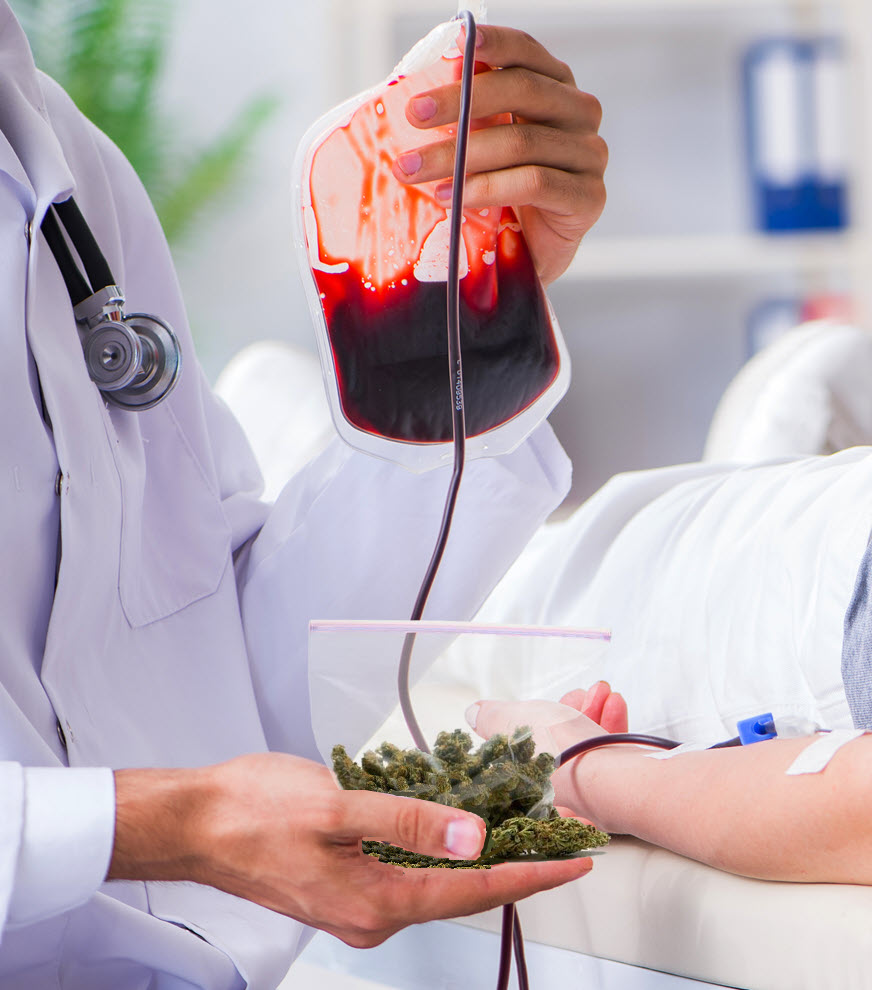
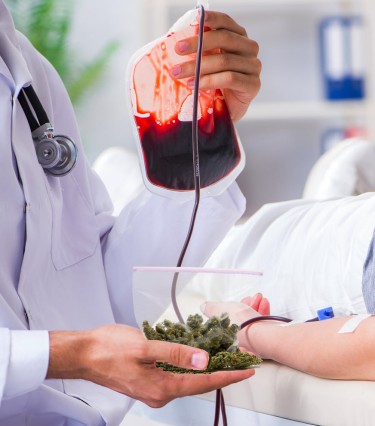
Blood donation involves contributing a portion of your blood for medical purposes. It’s essential to distinguish between blood and plasma donations, as they are separate processes. It’s called blood donation when you voluntarily give a sample of your whole blood. Typically, you provide around a pint or half a litre of whole blood during this process. The components of a standard blood donation include platelets, plasma, white blood cells, and red blood cells.
Each year, approximately 6.8 million Americans donate blood for transfusions, according to the Red Cross.
There are numerous reasons why someone might require a blood transfusion, such as severe accidents, injuries, surgeries, or medical conditions like anemia and hemophilia. Blood used for such critical procedures is obtained through blood donation, making blood donation a crucial way to assist those in need of transfusions.
Before donating blood, individuals are required to answer questions regarding their health, lifestyle, and travel history to determine their eligibility.
While smoking cannabis does not automatically disqualify someone from donating blood, if visible signs of cannabis use are present during the appointment, the clinic may decline the donation. The American Red Cross emphasizes that while they do not promote the use of controlled substances, the use of marijuana, cigarettes, or alcohol does not necessarily disqualify a person from donating blood. However, individuals cannot donate blood while under the influence of legal or illegal drugs or alcohol. Legal or illegal use of marijuana does not typically result in deferral unless the individual is under its influence at the time of donation.
Understanding Blood Donation: Process and Components
Blood donation is a vital medical procedure that involves voluntarily contributing a portion of one’s blood to help those in need. It’s crucial to grasp the process and components involved in this noble act.
Process: When people opt to give blood, they go through a variety of procedures to guarantee a safe and successful donation. This normally comprises registration, a brief health assessment, and the actual donation process, which involves taking blood from an arm vein. Following donation, donors are often given refreshments to restore fluids and nutrients lost during the process.
Components: Blood is made up of various components, each having its specific purpose. A normal blood donation comprises platelets, plasma, white blood cells, and red blood cells. These components are essential for a variety of biological activities, including oxygen delivery, immunological response, and coagulation. Donating blood helps to replace these important components for people in need of transfusions.
The Importance of Blood Transfusions
Blood transfusions are critical medical procedures that can save numerous lives. Whether due to catastrophic accidents, traumatic injuries, prolonged operations, or underlying medical disorders such as anemia and hemophilia, the infusion of donated blood is necessary. Patients obtain vital blood components through these transfusions, which aid in their rehabilitation and strengthen the body’s ability to repair and rehabilitate.
People in a variety of medical situations require blood transfusions immediately to stabilize and restore their health. The need for donated blood endures despite improvements in medical treatment, mostly due to population increase, medical crises, and continuing healthcare needs. Millions of people worldwide depend on blood transfusions every year to prolong their lives and improve their quality of life.
Maintaining a sufficient blood supply is still difficult. Regular blood donations from qualified people are therefore essential to ensuring that hospitals and other healthcare institutions have an adequate supply of blood on hand to quickly attend to the requirements of patients in severe conditions.
Eligibility Criteria for Blood Donation
To ensure the safety and efficacy of given blood, eligibility standards must be strictly adhered to. Before giving blood, individuals are thoroughly screened to verify their fitness as donors. This screening examines many elements of their health, lifestyle, and travel history to reduce possible hazards and protect both donors and receivers.
One important part of eligibility screening is determining the donor’s general health. Donors must fulfil specific health requirements to guarantee that their blood is suitable for transfusion. This involves being in good overall health, free of infectious infections, and having enough hemoglobin to prevent anemia. Furthermore, donors must be over a particular weight barrier to reduce the possibility of unwanted consequences during donation.
Living conditions are an important factor in determining one’s eligibility for blood donation. Donors are asked about their history of intravenous drug use as well as their current practices, which include consuming alcohol and smoking. Although these factors may not instantly disqualify someone from donating blood, they are considered in the context of overall health and safety measures.
In addition, people must reveal their past travel history, especially if it includes trips to areas where epidemics or endemic illnesses are present. Certain locations may provide a higher risk of infectious agent exposure, therefore temporarily postponing blood donation may be necessary to stop the spread of illness. Blood donation facilities can maintain strict guidelines and guarantee the integrity of the supply of given blood by carefully weighing these variables.
Marijuana Use and Blood Donation
The examination of marijuana usage in the context of blood donation is critical for preserving the quality of given blood while adhering to donor eligibility guidelines. Although consuming cannabis does not automatically preclude someone from giving blood, following standards assures the safety and efficacy of the process.
The American Red Cross and other blood donation organizations emphasize that while they do not support the use of restricted substances, including marijuana, this does not always exclude people from giving blood. Nonetheless, donors must not be under the influence of any legal or illicit drugs throughout the donation procedure. Thus, if apparent evidence of cannabis use are discovered during the donation appointment, delaying the donation becomes necessary to ensure the well-being of both the donor and the receiver.
Transparency about marijuana usage during the eligibility screening process is critical. Donors are typically asked about their most recent drug usage, including marijuana, to determine their fitness for donation. While marijuana usage does not automatically preclude people from donating blood, open disclosure about substance use allows blood donation facilities to make well-informed choices regarding donor eligibility, guaranteeing the safety and dependability of the blood supply.
Bottom Line
Although marijuana usage does not inherently preclude someone from giving blood, it is crucial to follow eligibility requirements and be open about substance use when being screened. Donating blood is still a life-saving medical operation that saves many lives every year. Comprehending the procedure, significance, and qualifying standards for blood donation, in addition to taking into account variables such as marijuana consumption, guarantees the security and effectiveness of the blood supply that is donated, thus helping individuals in need of transfusions.
WEED USERS DONATING BLOOD, READ ON…
Cannabis News
Former Minnesota Governor Jesse Ventura Starts Cannabis Brand
Published
22 hours agoon
April 23, 2024By
admin
Former Minnesota Governor and ex-professional wrestler Jesse Ventura is the latest celebrity to start a cannabis brand. Ventura served as Governor of the Land of 10,000 Lakes from 1999 to 2003. One could say that no other Governor serving during the late ’90’s or early 2000’s had quite the extensive background in variously different forms of popular entertainment as Ventura, with the exception of a certain former bodybuilder from Austria and “Governor-nator” from California. Fun fact, both of those former Governors starred in the 1987 action blockbuster Predator.
Celebrities and cannabis ventures
Celebrities have been putting their hats into the further mainstream cannabis industry in droves by starting cannabis ventures, to greatly varying degrees of success. Some award-receiving cannabis brands such as Willie’s Reserve (by country music legend Willie Nelson) have become mainstays at dispensaries across the states. Legendary hip-hop artists and cannabis connoisseurs Snoop Dogg and Wiz Khalifa have each had multiple forays into the billion-dollar industry of their favorite plant. Athletes like Mike Tyson, who created the wildly popular Tyson 2.0 cannabis brand, have also found success in the space.
Jesse Ventura: a diverse background
Long before Ventura became politically involved, he served in the United States Navy Underwater Demolition Team during the Vietnam War. After leaving the military, Ventura became a full-patched member of the Mongols Motorcycle Club in the early 1970’s. After leaving the bike club and attending North Hennepin Community College near his hometown of Minneapolis, Ventura served as a bodyguard for some of music’s greatest bands of the era, including The Rolling Stones and Grateful Dead.
Starting in 1975, Ventura began a career in professional wrestling that would see him win numerous championships across multiple promotions. He wrestled in memorable matches with some of professional wrestling’s greatest legends, from Cowboy Bob Orton to Macho Man Randy Savage and arguably the most famous wrestler of all time, none other than Hulk Hogan. After he retired from fighting in the squared circle, Ventura served as an animated, sometimes controversial commentator for both the WCW and the WWF, the two biggest wrestling promotions at the time.
Ventura’s political career and advocacy
While he was still serving as a wrestling color commentator, Ventura decided to begin his foray into politics that would eventually span over a decade and lead him to the highest seat in Minnesota politics. For his very first election, Ventura ran as an independent candidate in the 1991 mayoral election of Brooklyn Park, Minnesota, where he not only won but beat the 18-year incumbent candidate. Running on a platform of “fiscally conservative and socially liberal”, Ventura might be considered either centrist or possibly even libertarian by today’s standards. He was vehemently against overspending and unnecessary taxes, but he supported drug sentencing reform and admitted on numerous occasions that the Drug War was a failure. He was a proponent for education reform and Second Amendment rights, while also supporting cannabis legalization and gay rights including marriage (this was at a time when both the majority of Republicans and even Democrats disapproved of same-sex marriage).
In the 1998 Minnesota gubernatorial election, Ventura made political history as one of the first third-party candidates to win such an important election, beating out career lawyers and politicians. During his tenure, Ventura operated on a platform that criticized the decisions of both parties, such as a lack of quality mass transit systems and condemning the previously held embargo on all Cuban products in 2002.
Cannabis advocacy and legalization
His most recent newsworthy event came in February of 2023 where he attended a Senate Environment, Climate and Legacy Committee meeting and passionately recounted the story of how cannabis saved his wife’s life from a debilitating seizure condition after four anti-seizure medications failed to do so. Despite cannabis being illegal in Minnesota at the time, the former governor knowingly broke the law to provide cannabis to his wife.
“Cannabis saved my life. Let that sink in. Not me personally, but the 38th first lady of Minnesota. And if I get choked up a little, bear with me. My wife took the first three drops under the tongue and has not had a seizure since. None. Marijuana cannabis stopped the seizures.” he told a Minnesota Senate committee.
Ventura’s entry into the cannabis industry
Ventura’s testimony was clearly moving, as the former governor stood next to current Minnesota Governor Tim Walz when Walz signed House Bill 100 in May 2023, which legalized recreational cannabis for the state. Since then, Ventura has decided to enter into the newly legal Minnesota cannabis industry with the Jesse Ventura Farms brand in partnership with local cannabis company Retro Bakery.
“I can’t tell you how truly amazing this feels,” Ventura said in a blog post. “To finally be able to legally share with you, products from a plant that has had such an amazing impact on my life. Not to mention the historical significance of being the first U.S. Governor to officially put his name on a cannabis brand. Each step brings us closer to finally ending this tragic and dangerous war on drugs. Cannabis saved my family’s life.”
Although he’s sticking to only federally legal hemp-derived products for now, Ventura still fully supports cannabis reform to all extents. The products come in multiple forms too, from Maui Wowie Gummies to chocolates. And with a launch party scheduled for 4/20 at a local Minneapolis dispensary, the former Governor is showing his continued support for the newly legalized industry that’s on track to reach over $1 billion in annual sales in just a couple years.
Even as the Minnesota cannabis industry expands into a several hundred million-dollar industry, Ventura will undoubtedly use his platform and public advocacy for the plant that saved his family’s lives for the betterment of the health of Minnesotans. Ventura’s entry into the market signifies a significant moment in the state’s history and reflects a broader shift in societal perceptions of cannabis.
Cannabis News
Nearly 60% of Americans Now Believe You Should Have the Right to Legally Grow Your Own Weed at Home Says a New Harris Poll
Published
23 hours agoon
April 23, 2024By
admin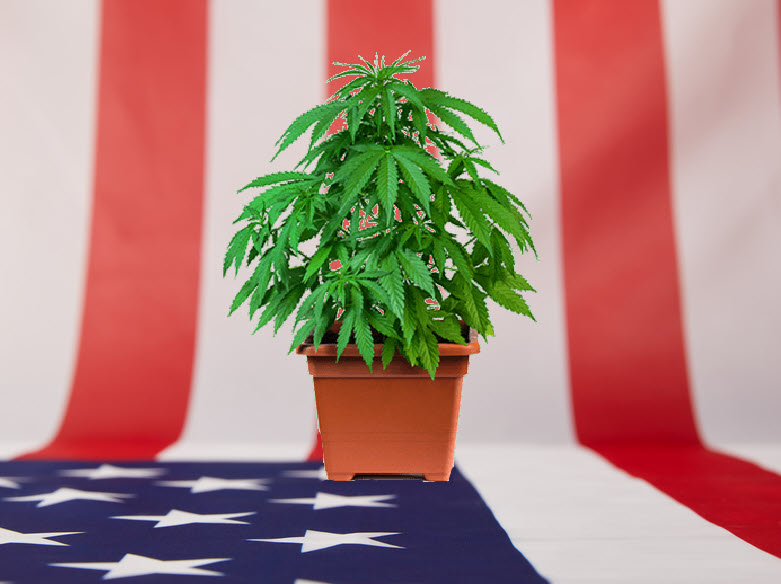
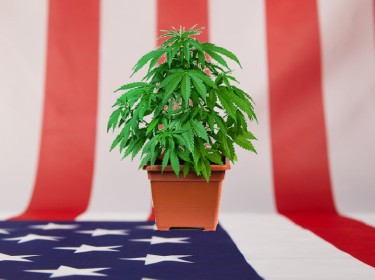
Nearly 60% of Americans believe home cultivation should be a right!
A recent poll conducted by The Harris Poll in conjunction with Royal Queen Seeds found that a majority of American adults believe that home cultivation of cannabis should be legally permitted. According to the survey, 59% of respondents agreed that “all Americans should have the right to legally grow cannabis at home.”
This sentiment was especially pronounced among current cannabis consumers, with 81% supporting home grow rights. Interestingly, 62% of consumers said they would prefer to grow their own cannabis rather than purchasing it from retailers. Key reasons cited include cost savings, higher perceived quality and safety compared to store-bought products, and the simple enjoyment and pride of cultivating one’s own plants.
The poll’s findings come at a time of rapidly evolving cannabis laws, both in the United States and abroad. Uruguay, Canada, Malta, Luxembourg and most recently Germany have all legalized home cultivation to varying degrees. In the U.S., many states that have legalized adult-use cannabis also permit limited home grows, though some, like Washington, still prohibit it for non-medical users.
As more jurisdictions consider reforms, the question of whether to include home grow rights has emerged as a key point of debate. Advocates argue that allowing personal cultivation is an essential component of ending prohibition and promoting individual liberty. Critics raise concerns about enforceability, excess supply leaking into unregulated markets, and potential conflicts with existing medical and commercial systems.
While the Harris poll suggests a majority of the American public supports home cultivation, it remains a complex and often controversial facet of the larger legalization discussion. As policy makers weigh shifting cultural attitudes against practical challenges, the legal status of home grows will likely remain a closely-watched issue in the years ahead.
In the rest of this article, we’ll take a closer look at some of the poll’s other key findings, and what they suggest about the evolving relationship between Americans and cannabis cultivation.
Diving deeper into the poll, several noteworthy findings emerge that shed light on Americans’ attitudes and behaviors around home cannabis cultivation.
One striking result is that 66% of current cannabis consumers would consider purchasing seeds as a 4/20 gift – a figure that jumps to 81% among those who plan to grow their own plants this year. This suggests that home cultivation is not only a popular hobby, but one that is increasingly associated with the celebratory and social aspects of cannabis culture.
The poll also highlights the perceived benefits of home growing among those who have tried it. Nearly half reported a greater sense of confidence, joy, pride and connection to nature from cultivating their own cannabis. Others cited more practical advantages like cost savings, superior quality, and the simple fun of engaging in the hobby.
These findings paint a picture of an American public that is increasingly comfortable with cannabis cultivation and eager to participate in it when permitted. In many ways, this trend can be seen as a reaction to the decades-long War on Drugs, which treated cannabis as a dangerous substance and criminalized even small-scale home grows. As public opinion shifts and the harms of prohibition become more widely acknowledged, it’s natural that many Americans would embrace the newfound freedom to cultivate openly and without fear of prosecution.
For policymakers, these poll results send a clear message about the direction of public sentiment. By aligning laws with the growing consensus around home grow rights, legislators can not only satisfy a popular demand, but also strike a blow against the illicit cannabis market. When consumers can legally grow their own high-quality products, they are less likely to turn to unregulated sources, undermining the profits and influence of criminal enterprises.
However, the path forward is not entirely clear. Even as federal legalization appears increasingly likely, current proposals would only reschedule cannabis to Schedule III – a category that does not explicitly allow for home cultivation. To fully realize the will of the American people as expressed in this poll, further reforms may be necessary at both the state and national level.
As the debate over home grow rights continues, polls like this one will play an essential role in shaping the conversation and guiding policy decisions. By shedding light on the evolving attitudes and experiences of the American public, they offer valuable insights into the most effective and equitable ways to move beyond prohibition and build a more just and rational approach to cannabis cultivation.
As the movement to legalize cannabis continues to gain momentum across the United States, it’s crucial that advocates and enthusiasts remain vigilant in the fight for home cultivation rights. While federal rescheduling of cannabis to Schedule III would represent a significant step forward, it’s important to recognize that this change alone may not guarantee the right to grow at home.
This is where local activism comes into play. Even if federal law falls short of explicitly permitting home cultivation, individual states retain the power to legalize and regulate the practice within their borders. By getting involved with grassroots organizations and advocacy groups, citizens can pressure state and local officials to include home grow provisions in any legalization measures.
One promising avenue for expanding access to home cultivation is through the establishment of cannabis clubs. These organizations, which have already taken root in countries like Mexico, allow members to pool their resources and legally grow a larger number of plants than would be permitted for an individual. For example, while Mexican law limits personal cultivation to six plants per person, with a maximum of three mature plants at any given time, cannabis clubs are allowed to cultivate up to 80 plants collectively.
This model offers several advantages. First, it provides a legal framework for those who may not have the space, equipment or expertise to cultivate their own cannabis at home. By joining a club, these individuals can still enjoy the benefits of locally-grown, high-quality products without the hassle or risks of doing it themselves. Second, cannabis clubs can serve as hubs for education, community-building, and advocacy around cultivation issues. By bringing together growers and enthusiasts in a shared space, these organizations can help to normalize and demystify the process of cultivation, while also providing a platform for political engagement.
Of course, the establishment of cannabis clubs is just one potential avenue for securing home grow rights. Ultimately, the most effective strategy will depend on the unique political and cultural landscape of each state and locality. What’s important is that advocates remain engaged and proactive in shaping the conversation around legalization.
This means not simply accepting whatever limited reforms politicians put forward, but actively pushing for more comprehensive changes that prioritize individual liberty and autonomy. It means showing up to town halls and city council meetings, writing op-eds and letters to representatives, and mobilizing networks of like-minded citizens to demand change.
In the end, the fight for home cultivation rights is about more than just the freedom to grow a few plants in one’s backyard. It’s about fundamentally redefining our relationship with this ancient and versatile plant, and asserting our right as individuals to cultivate it for our own needs and purposes. By working together and staying focused on this goal, advocates can help to create a future in which cannabis cultivation is not just tolerated, but celebrated as a basic human right.
HOW TO GROW WEED IN YOUR BACKYARD, READ ON…

The Best 6 Ways To Increase Creativity At Work

Can CBD Help With An Overactive Bladder

US Marijuana Industry Hits All-Time High

If You Get High Can You Still Go and Give Blood?

Former Minnesota Governor Jesse Ventura Starts Cannabis Brand

Nearly 60% of Americans Now Believe You Should Have the Right to Legally Grow Your Own Weed at Home Says a New Harris Poll

A Holiday for Weed Fans, Complete With Sponsors

420 celebrations: photos from the unofficial marijuana holiday

Recreational cannabis use may lower your risk of cognitive decline, study says

This Will Be The ‘Last 4/20 Celebration’ With Marijuana Still In Schedule I, Congressman Says, While Predicting House Action On Cannabis Banking Bill

Distressed Cannabis Business Takeaways – Canna Law Blog™

United States: Alex Malyshev And Melinda Fellner Discuss The Intersection Of Tax And Cannabis In New Video Series – Part VI: Licensing (Video)

Drug Testing for Marijuana – The Joint Blog

What you Need to Know

Cannabis, alcohol firm SNDL loses CA$372.4 million in 2022

NCIA Write About Their Equity Scholarship Program

City Of Oakland Issues RFP For Employee Training Programs

It has been a wild news week – here’s how CBD and weed can help you relax

A new April 20 cannabis contest includes a $40,000 purse

UArizona launches online cannabis compliance online course
Trending
-

 Cannabis News1 year ago
Cannabis News1 year agoDistressed Cannabis Business Takeaways – Canna Law Blog™
-

 One-Hit Wonders1 year ago
One-Hit Wonders1 year agoUnited States: Alex Malyshev And Melinda Fellner Discuss The Intersection Of Tax And Cannabis In New Video Series – Part VI: Licensing (Video)
-

 drug testing4 months ago
drug testing4 months agoDrug Testing for Marijuana – The Joint Blog
-

 Cannabis 1011 year ago
Cannabis 1011 year agoWhat you Need to Know
-

 Marijuana Business Daily1 year ago
Marijuana Business Daily1 year agoCannabis, alcohol firm SNDL loses CA$372.4 million in 2022
-

 Education1 year ago
Education1 year agoNCIA Write About Their Equity Scholarship Program
-

 Education1 year ago
Education1 year agoCity Of Oakland Issues RFP For Employee Training Programs
-

 Cannabis1 year ago
Cannabis1 year agoIt has been a wild news week – here’s how CBD and weed can help you relax





